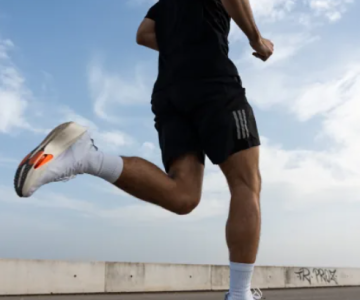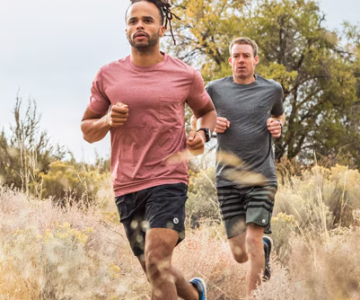In the modern world of running, GPS watches and smartphones have become essential tools for tracking pace, distance, and performance. According to Running USA, over half of runners rely on GPS devices during their runs. However, while these devices offer valuable data, there’s a downside: they can lead to a shift away from training and racing based on feel, and instead, you may find yourself overly dependent on numbers. But what if you were to race without any tech and simply listen to your body? Here’s why running “naked,” or without data, might be the key to better performance.
The Pitfalls of Relying on Technology
While technology has transformed the way we track our runs, it can also cause us to overthink our pace. When you rely on your watch to dictate your race, you risk either going out too fast or holding back when you’re feeling great. Over-checking your pace or constantly worrying about your stats can lead to unnecessary stress, which ultimately impacts your performance. According to running coach Jenny Hadfield, the solution is simple: trust your “inner GPS.” By tuning into your body and racing by feel, you run at your optimal speed for that particular day, avoiding the pitfalls of technology-driven anxiety.
How to Tune Into Your Inner Pace
One of the best ways to gauge your effort is by listening to your breath. Coach Budd Coates, author of Running on Air, recommends paying attention to your inhale-exhale patterns. For a slow to moderate run, aim for a five-step count: inhale for three steps, exhale for two. During more intense runs, try a three-step count: inhale for two steps, exhale for one. Hadfield also uses a color-coded intensity scale to assess effort: yellow (comfortable pace), orange (manageable for short bursts), and red (too intense to talk). This simple method can help you stay in tune with your body’s signals, allowing you to adjust your pace based on how you feel, not on your watch.
For short races like 5Ks, you may maintain a hard effort throughout, but for longer distances like marathons, it’s crucial to pace yourself, especially in the early stages. Aim to run the first portion of the race comfortably, conserving energy for the later miles.
Practicing the Art of Running by Feel
To get started with running without a GPS watch, try at least one run per week where you leave the tech behind. A recovery or long run is ideal, as it encourages you to run at an easy, natural pace. Every few weeks, incorporate a workout where you practice adjusting your effort levels: warm up for 10 minutes, then alternate between three minutes of moderate running, one minute of hard running, and two minutes of easy running, repeated five times. Finish with a 10-minute cool down. This practice will help you refine your sense of pacing and effort.
If you’re preparing for race day, consider running a 5K or 10K without your GPS watch before your goal race. This will give you a chance to practice tuning into your effort level, even in the midst of race-day adrenaline.
Using Technology Without Overdoing It
If the idea of running completely without pacing data feels too unsettling, there’s a compromise. Wear a regular watch and check it occasionally—perhaps halfway through a 5K or every 8 kilometers in a marathon—so you can gauge how your effort matches your pace. Alternatively, you could rely on the race clock or follow a pace group if it feels comfortable. These methods allow you to keep track of your speed without stressing over every detail. If you prefer to wear a GPS watch, consider ignoring the data during the race and focusing on how you feel until you cross the finish line.
As Hadfield points out, the key is not to ditch the technology entirely but to use it as a tool for measurement, not as a coach dictating every step you take.
Conclusion
Running without a GPS watch can be a liberating experience, allowing you to race based on how you feel rather than relying on numbers. While technology can be a helpful tool, learning to trust your body’s cues can improve your performance and help reduce the stress of over-analyzing every detail. By focusing on breathing, effort levels, and how your body feels, you can enjoy a more intuitive and less stressful running experience.




